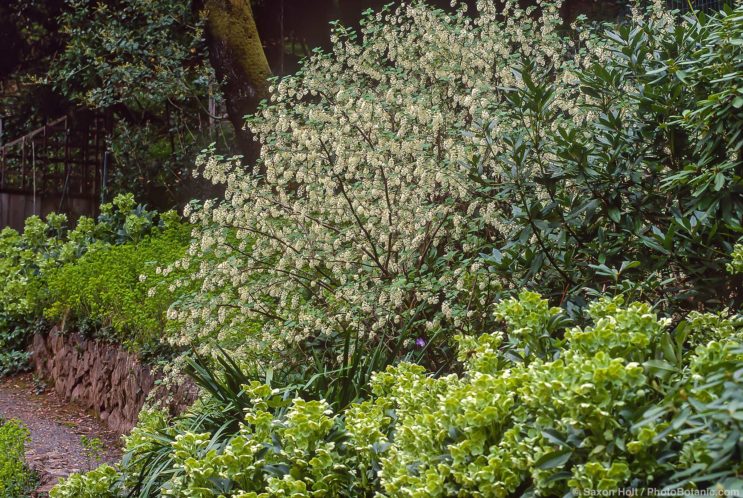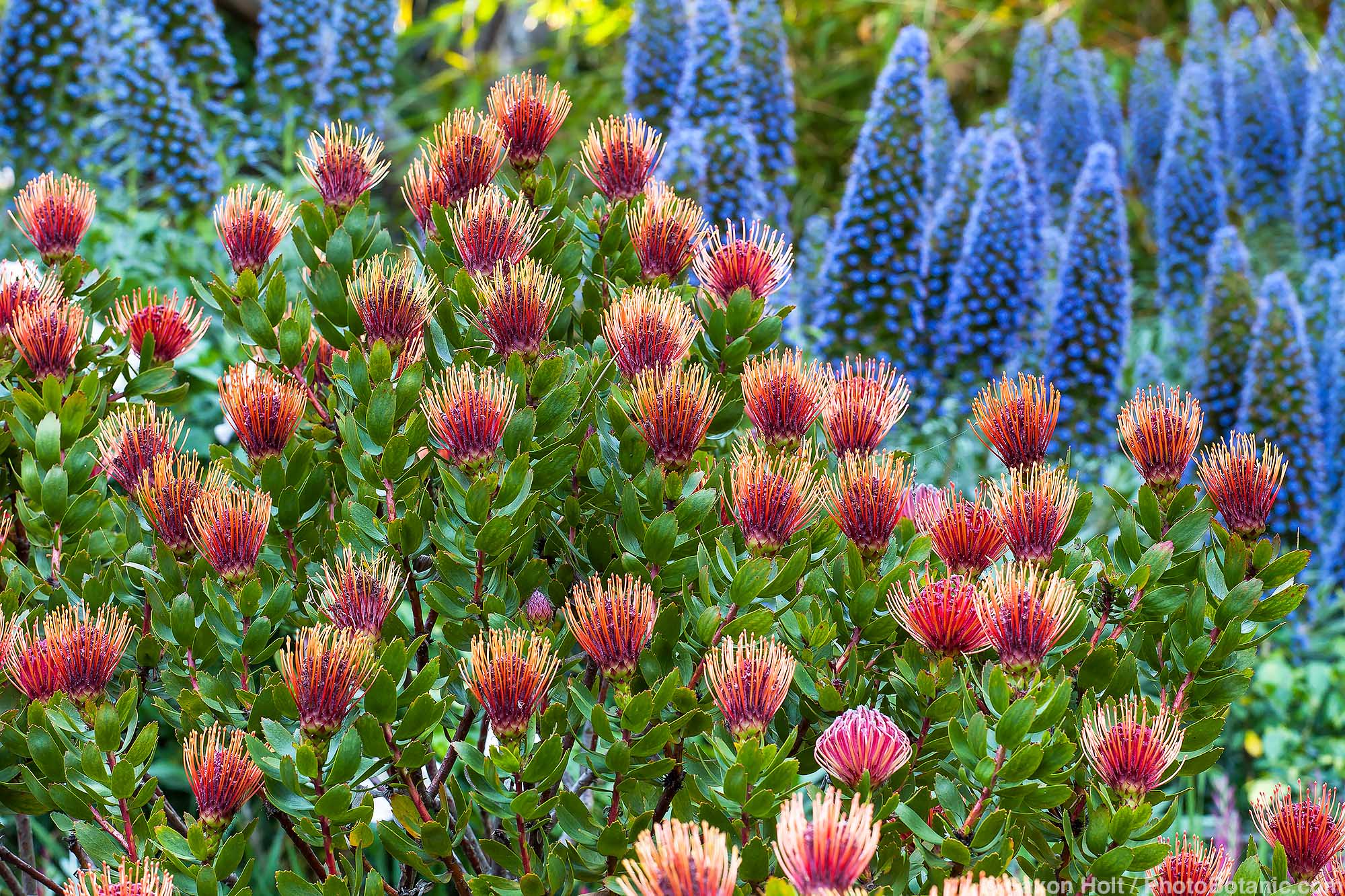Ornamental Currants and Gooseberries

Share This!
Although usually grown for their exquisite flowers, ornamental currants and gooseberries are ideal components of habitat gardens that provide year-round sustenance for wildlife. As some of the first shrubs to flower wherever they are found, they are important sources of early-season nourishment for hummingbirds, bees, and other pollinators. Their leaves are food for the caterpillars of butterflies and moths that support the offspring of nesting birds. And their fruits, well, let’s just say they’re gone almost before the gardener has a chance to sample them.

Ribes sanguineum, red- or pink-flowering currant
Currants and gooseberries both belong to the genus Ribes, but it’s easy to tell them apart, even when their branches are bare. The most obvious difference is the presence of sharp spines and bristles on the stems and fruits of most gooseberries that are not found on almost all currants.
Currants also bear flowers in grapelike clusters near the ends of branches, while gooseberry flowers are solitary or in small groups of two or three all along the stems. Currants produce small, round fruits that when ripe are powdery blue, red, or purplish black. The fruits of gooseberries are larger and green, red, or yellow-orange, usually with visible stripes on skin that is almost transparent.

Rain drops on berries of Ribes sanguineum
The most commonly grown and readily available ornamental currants are varieties and cultivars of Ribes sanguineum, which also are some of the easiest to grow. The variety sanguineum, red-flowering currant, fairly quickly reaches 6-10 feet tall and 6-8 feet wide, with pendulous clusters of fragrant, red, pink, or sometimes white flowers. Flowering is in early to mid-spring along with the deeply veined, 3- to 5-lobed, maplelike leaves and followed by powdery, blue-black berries. This variety is native to the coastal mountains of northern California north to British Columbia, often along streams or in partly shaded forest edges. ‘White Icicle’, with pure white flowers, and ‘King Edward VII’, with bright red flowers, are more compact selections and good choices for smaller gardens.
The pale to bright pink flowers of Ribes sanguineum var. glutinosum appear in early spring, just before the sticky, aromatic leaves unfurl. This variety is native along the coast and in coastal mountains from southwestern Oregon south to Santa Barbara County. ‘Spring Showers’ has exceptionally long clusters of bright pink flowers. ‘Claremont’ has bright pink flowers with pale pinkish white centers. ‘Inverness White’ has showy clusters of white flowers. Away from the coast, all do best in light shade or afternoon shade and with occasional summer water.

Ribes sanguineum ‘Inverness White’
Ribes malvaceum, chaparral currant, is more accepting of sun and summer dryness than R. sanguineum and blooms earlier and longer, sometimes from late fall into early spring. Fragrant flowers are variable and often bicolored, with pinkish red sepals surrounding shorter, white petals and darker pink buds. Berries when ripe are purplish black. The aromatic, rough-textured, lobed and serrated leaves drop in late summer, returning with cooler weather and fall rains.
Two varieties of Ribes malvaceum are native to chaparral and oak woodlands in coastal mountains and foothills from northern California south into northern Baja California. The variety malvaceum is found at lower elevations and in more northerly locations and the variety viridifolium is found at higher elevations farther south. ‘Montara Rose’, with dark pink flowers, ‘Rana White’, with pure white flowers, and ‘Dancing Tassels’, with pale pink flowers, are selections of var. malvaceum. ‘Ortega Beauty’, with rose red flowers, and ‘Christy Ridge’, with pink and white flowers, are selections of var. viridifolium.

Ribes aureum, golden currant
For a completely different look and feel, Ribes aureum has small, glossy green, lobed leaves and short clusters of fragrant, golden yellow flowers in early to mid-spring. Flowers age to orange and are followed by yellow berries that when ripe are almost black. The variety aureum is native to the mountains of northeastern California east to the Rocky Mountains and north to British Columbia. It is upright and 6-10 feet tall, spreading slowly by rooting stems to form a thicket.
The variety gracillimum is usually lower growing and more sprawling with scentless yellow flowers that age to red. It is native to lower elevations from the San Francisco Bay Area south to western Riverside County.
Ribes speciosum is the ornamental gooseberry most commonly grown in gardens. Fast growing to 4-10 feet tall and 4-8 feet wide, its leathery, maplelike leaves are glossy dark green and its showy flowers are a deep purplish red. Flowers hang individually or in twos or threes along the fiercely spiny, arching to horizontal branches, their long, protruding stamens extending well below the petals. Winter to mid-spring flowers are followed by translucent red berries in summer. This shrub is native to coastal sage scrub and chaparral from the Bay Area south to Baja California, usually in seasonally moist locations and in shade or part shade.

Ribes speciosum, fuchsia-flowered gooseberry
It’s important to note that all of the shrubs mentioned here and many other Ribes are deciduous, if only briefly, dropping some or all of their leaves in the heat and drought of high summer. Resist the urge to irrigate heavily to keep them green and growing. These shrubs are highly sensitive to summer water. A little may help, but a lot can be deadly. Give these shrubs part shade or afternoon shade except right along the coast and let them go dormant in summer.
Most currants and gooseberries also spread slowly by rooting stems as well as by seeds distributed by berry-eating birds. Plant them where there is room for some thicketing or prepare to contain them by routinely cutting or digging out suckers.
Share This!
Related Articles
By: Nora Harlow
By: Nora Harlow
By: Nora Harlow





